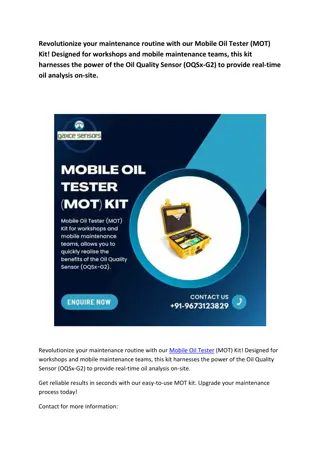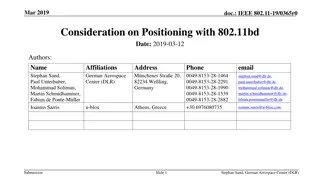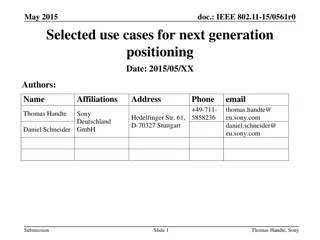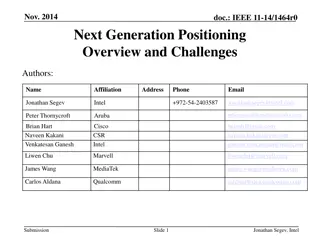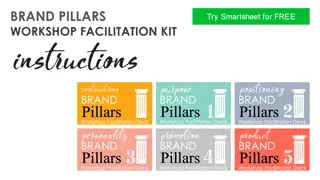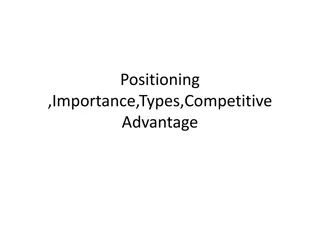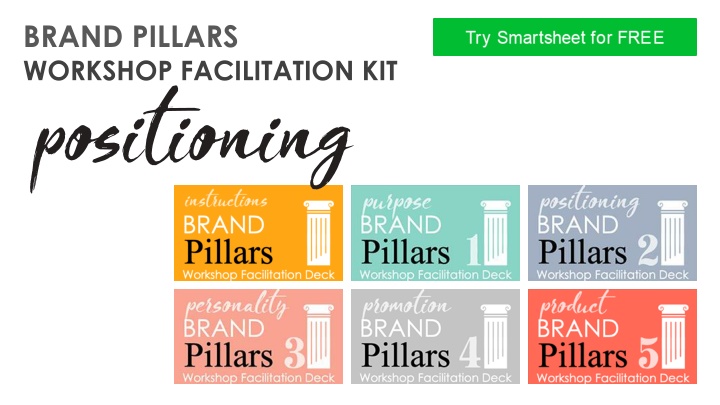
Crafting Effective Brand Positioning Strategies
Explore the key components of brand positioning, from identifying target markets to creating compelling value propositions. Learn how to differentiate your brand from competitors and frame your offering within a specific context with positioning statements. Utilize helpful templates and pre-activity questions to guide your brand strategy workshop effectively.
Download Presentation

Please find below an Image/Link to download the presentation.
The content on the website is provided AS IS for your information and personal use only. It may not be sold, licensed, or shared on other websites without obtaining consent from the author. If you encounter any issues during the download, it is possible that the publisher has removed the file from their server.
You are allowed to download the files provided on this website for personal or commercial use, subject to the condition that they are used lawfully. All files are the property of their respective owners.
The content on the website is provided AS IS for your information and personal use only. It may not be sold, licensed, or shared on other websites without obtaining consent from the author.
E N D
Presentation Transcript
BRAND PILLARS WORKSHOP FACILITATION KIT
BRAND Pillars Workshop Facilitation Deck
POSITIONING PRE-ACTIVITY QUESTIONS Who are you targeting? Why? What does your model customer want? In which market is your brand competing? How are your competitors positioning their brand? In what ways do you stand out from your competitors? What pains/needs does your target customer have? What are the primary emotional and practical benefits that you offer your target customer? How do these offerings differ from those of your competitors? What does your brand do? What does it NOT do? Who is your brand for? Who is it NOT for? 1 4
VALUE PROPOSITION IDENTIFY YOUR CUSTOMER IDENTIFY YOUR OFFERING 1. Identify your customer s primary problem: What are they trying to accomplish? 1. What products, experiences, and services do you offer? 2. What pains do they hope to relieve with your product? What do they hope to gain? 2. What do your customers gain from what you offer? How do you relieve their pains? 3. By answering questions 1 and 2, you can answer the following: How do your customers define your value? 3. By answering questions 1 and 2, you can answer the following: How are you different from your competitors? After answering these questions, use a value proposition framework to create your VP statement. Here is an example VP statement: 2 4 We help x do y by doing z.
POSITIONING STATEMENT Your positioning statement uses your value proposition to frame your offering within a specific context (i.e., a specific customer segment within your market). Who is your audience? Be specific. What is your market? Be specific. Why is your brand better than that of your competitors? How can you show that your brand delivers on its promise? 3 4
POSITIONING STATEMENT Use one of the many brand positioning statement templates available to arrange the answers to the questions above. For example: For [target market], [brand] s [market niche] best delivers [brand promise] because [brand] 4 4 does [reason to believe].
DISCLAIMER Any articles, templates, or information provided by Smartsheet on the website are for reference only. While we strive to keep the information up to date and correct, we make no representations or warranties of any kind, express or implied, about the completeness, accuracy, reliability, suitability, or availability with respect to the website or the information, articles, templates, or related graphics contained on the website. Any reliance you place on such information is therefore strictly at your own risk.


